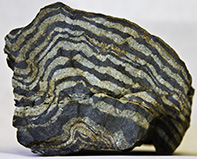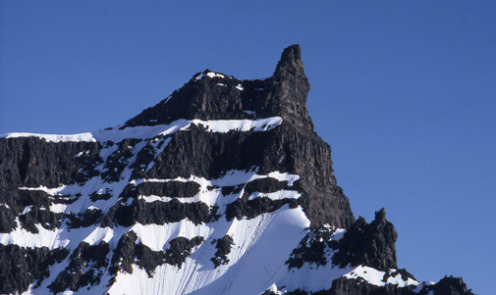Petrography and Dynamic Geology
 Curator
Curator
Without curator
Collection manager
Temporarily without collection manager
About the collection
The Petrographic collection consists of magmatic and metamorphic rocks, chiefly from Europe and the North Atlantic region, especially Greenland, Iceland and the Faeroe Islands.
The Dynamic Geology Collection encompasses specimens representing geological processes, exogenous as well as endogenous: volcanics, tectonic deformation, metamorphism, diagenesis, and weathering.
Strengths
- Collections from Greenland, Iceland and the Faeroe Islands
- Collections fra Danmark (especially the island of Bornholm)
- Glacial erratics from the Quaternary of Denmark
Important subcollections
- A systematic collection of magmatic and metamorphic rocks, especially of European provenance.
- A reference collection illustrating the geology of regions with magmatic and metamorphic rocks.
- Archean rocks from the region around Nuuk i West Greenland
- Alkalic, magmatic rocks from the Proterozoic Ilímaussaq intrusion of South Greenland
- Tertiary volcanics from the Faeroe Islands
- Tertiary volcanics from West Greenland (Disko-Nuussuaq region)
History
The materials within the Petrography and Dynamic Geology collections date back more than 200 years, with specimens from Denmark (especially the island of Bornholm), the Faeroe Islands, Iceland and Greenland. Some of these collections are also of significant importance to the scientific history of geology.
A substantial and important part of the collection derive from specimens described or referenced in scientific publications from the Geological Survey of Denmark and Greenland (GEUS) and its predecessors. This material is deposited at the Natural History Museum of Denmark in accordance with written agreements between the two institutions.

The mountain Giesecke’s Monument on the Nuussuaq Peninsula of West Greenland is made up of massive basaltic lava flows. Each lava bed was created during massive eruptions 60 million years ago. The remarkable profile of the mountain was created by erosion during the Quaternary.
